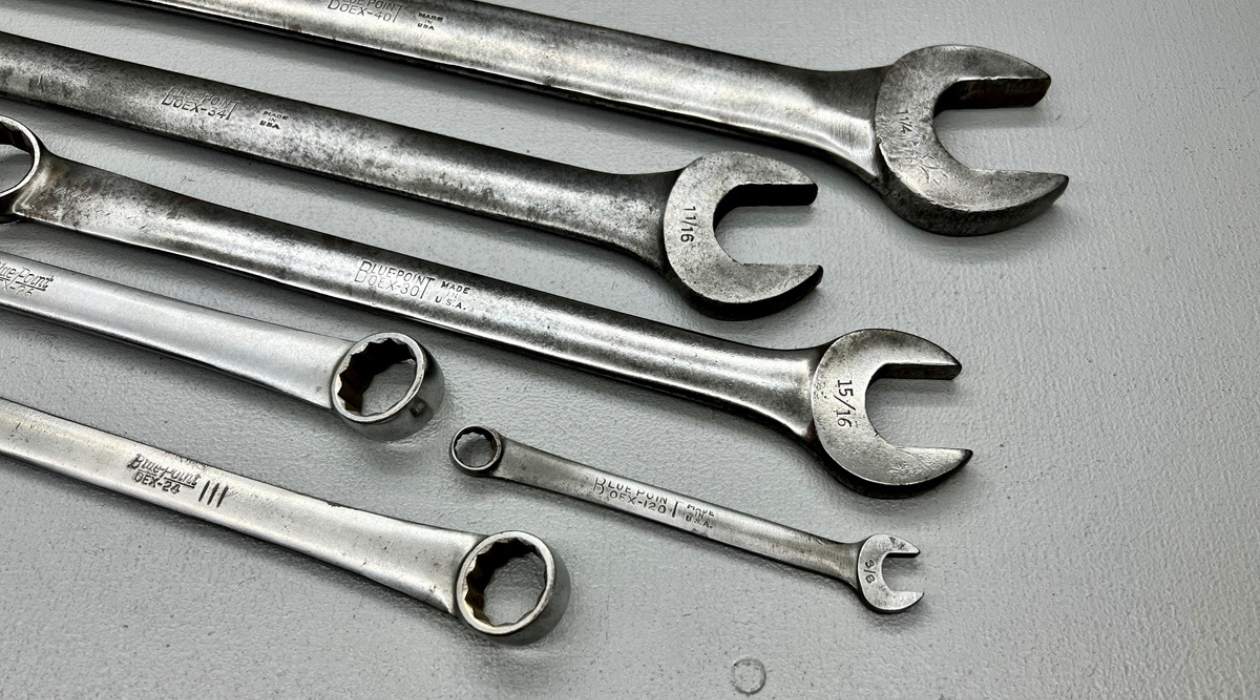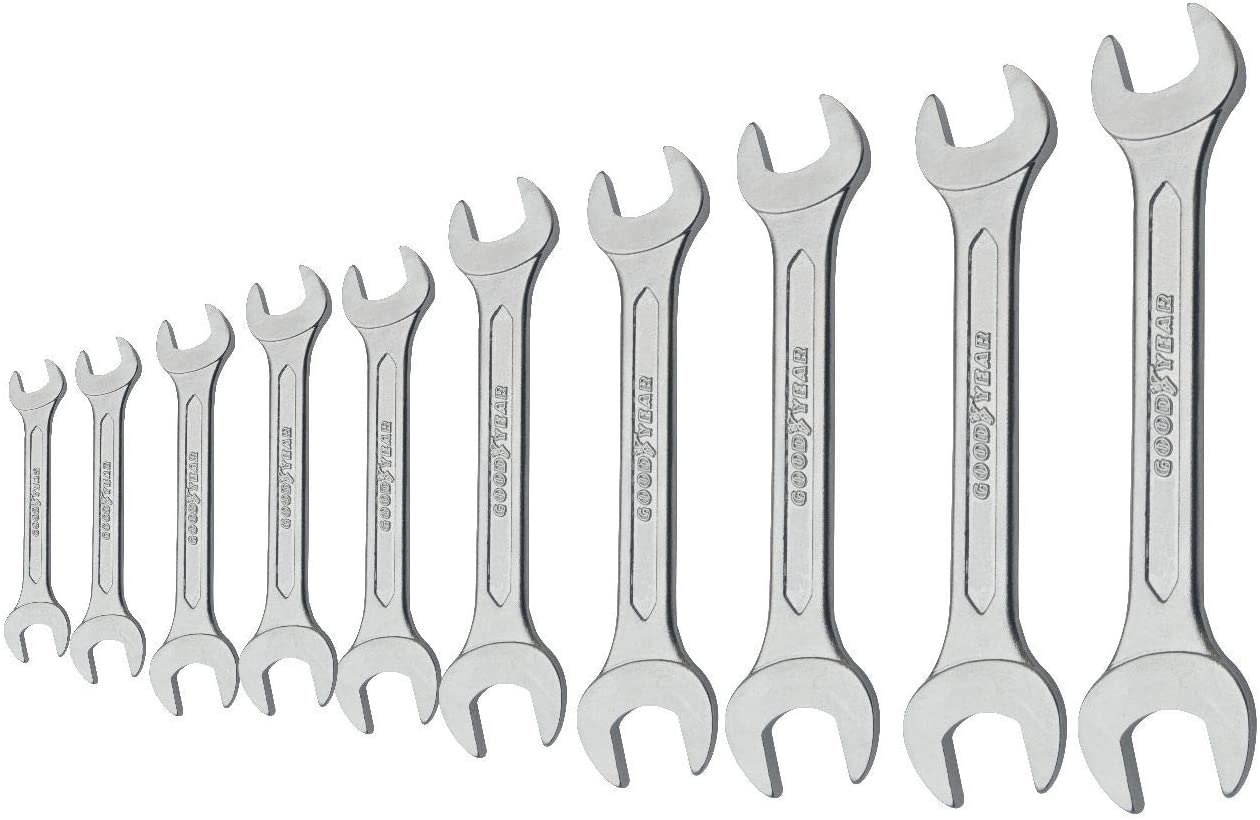Home>Articles>In Which Economic System Do Workers Often Use Hand Tools And Readily Available Natural Resources?


Articles
In Which Economic System Do Workers Often Use Hand Tools And Readily Available Natural Resources?
Modified: January 22, 2024
Discover articles exploring different economic systems and the use of hand tools and readily available natural resources by workers. Explore the role of workers in these systems and gain insights into their impact.
(Many of the links in this article redirect to a specific reviewed product. Your purchase of these products through affiliate links helps to generate commission for Storables.com, at no extra cost. Learn more)
Introduction
In the vast landscape of economic systems, there exist various approaches to production and resource utilization. While modern industrial societies heavily rely on complex machinery and sophisticated technology to meet their needs, there are still traditional economic systems that prioritize the use of hand tools and readily available natural resources. These systems embody a simpler and more sustainable approach to production, where human labor and ingenuity are harnessed to create goods and services.
Hand tools have been an integral part of human civilization since ancient times. From the humble hammer to the versatile chisel, these tools have enabled individuals to shape, create, and build. In traditional economic systems, hand tools play a crucial role in the production process. They are often passed down through generations, carrying the knowledge and craftsmanship of previous artisans. This reliance on hand tools fosters a sense of versatility and adaptability, as workers can easily manipulate and modify these tools to suit specific needs.
Alongside hand tools, traditional economic systems make use of readily available natural resources. These resources are typically found in the local environment and can include materials such as wood, stone, clay, and plants. The utilization of these resources is rooted in sustainable practices, as they can be replenished naturally over time. Unlike modern industrial systems that heavily rely on non-renewable resources, traditional systems prioritize the conservation and responsible use of natural materials.
By utilizing hand tools and readily available natural resources, traditional economic systems embody a close relationship between humans and their environment. This connection is reflected in various aspects of production, such as agriculture, craftsmanship, and construction. Workers in these systems often have a deep understanding of their local ecosystems and the resources they provide. This knowledge allows them to make the most efficient use of available materials, reducing waste and minimizing the environmental impact of their activities.
Examples of economic systems that prominently utilize hand tools and readily available natural resources can be found in various parts of the world. Indigenous communities, for instance, have long-standing traditions of sustainable practices. From the Inuit people in the Arctic utilizing bone and stone tools for hunting and fishing, to the Maasai in East Africa using spears and wooden tools for agricultural activities, these communities have thrived by working in harmony with their natural surroundings.
Key Takeaways:
- Traditional economic systems prioritize hand tools and local resources, fostering sustainability, affordability, and a deep connection to the environment. They showcase human ingenuity and resilience in production.
- While facing challenges like labor intensity and resource management, traditional economic systems demonstrate the value of utilizing hand tools and local resources. Their approach offers a sustainable and viable alternative in a modern industrial world.
Hand Tools in Traditional Economic Systems
In traditional economic systems, hand tools serve as the backbone of production and craftsmanship. These simple yet versatile tools are utilized across various industries and sectors, ranging from agriculture to construction to artisanal crafts.
One of the key advantages of hand tools is their accessibility and affordability. Unlike complex machinery that requires significant investment and maintenance, hand tools are often affordable and readily available. This accessibility allows individuals, particularly in rural areas and developing countries, to engage in productive activities without relying on external resources. Hand tools can be easily crafted or repaired using basic materials, making them a sustainable and self-sufficient option for communities.
Moreover, hand tools offer a high degree of customization and flexibility. Each tool can be adapted to suit specific needs and tasks. For example, a carpenter can modify a chisel to create various patterns and designs, depending on the intricacy required. This level of versatility allows artisans to express their creativity and skills while producing unique and personalized goods.
Furthermore, the use of hand tools promotes a close connection between workers and their craft. The hands-on nature of using these tools requires a deep understanding of materials and processes. Craftsmen develop a tactile sense and intuition that cannot be replicated by using automated machinery. This intimate knowledge and expertise contribute to the production of high-quality, artisanal products with a distinct human touch.
In addition to their technical advantages, hand tools offer a sense of cultural heritage and tradition. Many traditional economic systems have passed down knowledge and skills related to specific tools from one generation to another. This transmission of skills not only ensures the preservation of cultural practices but also allows for the continued use of these tools in a meaningful and purposeful manner.
However, it is essential to note that hand tools also have their limitations. While they excel in tasks that require precision and craftsmanship, they may not be as efficient or fast in large-scale production. In some cases, the use of hand tools may be labor-intensive, requiring significant physical exertion. Nonetheless, their simplicity and effectiveness make them well-suited for small-scale or localized production, where quality and attention to detail are valued over mass production.
In summary, hand tools play a vital role in traditional economic systems. They enable individuals and communities to engage in productive activities using affordable and customizable tools. Hand tools foster a sense of craftsmanship, connection, and cultural heritage, contributing to the production of unique and high-quality goods.
Utilization of Readily Available Natural Resources in Traditional Economic Systems
In traditional economic systems, the utilization of readily available natural resources is a cornerstone of sustainable production and resource management. These systems prioritize the use of materials that are abundant in the local environment, ensuring the longevity and viability of their economic activities.
One of the key advantages of using readily available natural resources is their accessibility. Traditional economic systems rely on materials that can be found locally, reducing the need for long-distance transportation and minimizing the carbon footprint associated with resource extraction. By utilizing materials that are readily at hand, communities can reduce their dependence on external sources and maintain self-sufficiency.
Furthermore, the use of readily available natural resources promotes a sense of connection to the local environment. In these systems, people have a deep understanding of the natural resources in their surroundings and the sustainable harvesting practices needed to ensure their continued availability. This knowledge is often passed down through generations, ensuring the preservation of traditional ecological knowledge.
Another advantage is the affordability of these resources. Compared to imported or processed materials, readily available natural resources are often more cost-effective and accessible to local communities. This accessibility allows for inclusive economic participation, as individuals with limited financial resources can still engage in productive activities and contribute to their community’s well-being.
The utilization of readily available natural resources also promotes a circular economy approach. In traditional economic systems, waste is minimized, and materials are often reused or repurposed. For example, wood from fallen trees can be used for construction or fuel, and natural fibers from plants can be transformed into textiles. This approach reduces the demand for new resources, conserves energy, and minimizes pollution.
However, it is important to note that the utilization of readily available natural resources also comes with challenges. Overexploitation or poor resource management can lead to environmental degradation and depletion. Traditional economic systems must strike a balance between meeting their current needs and ensuring the long-term sustainability of their natural resources.
In summary, the utilization of readily available natural resources in traditional economic systems offers numerous benefits. It promotes self-sufficiency, cultural connection, affordability, and circular economy principles. By relying on local resources and implementing sustainable harvesting practices, these systems can thrive while minimizing their impact on the environment.
Workers often use hand tools and readily available natural resources in a traditional or subsistence economic system. In this system, production is based on simple, manual labor and local resources.
Examples of Economic Systems with Hand Tools and Readily Available Natural Resources
Throughout history and across continents, there are numerous examples of economic systems that heavily rely on hand tools and readily available natural resources. These systems showcase the ingenuity and resourcefulness of human communities in utilizing their local environment to meet their needs.
One notable example is the traditional agricultural practices of the indigenous Quechua people in the Andean region of South America. The Quechua farmers utilize hand tools such as hoes, sickles, and wooden plows to cultivate their lands. They also make use of locally available natural resources such as llama dung for organic fertilizers and terraced landscapes for efficient water management. This sustainable approach to agriculture has allowed the Quechua people to thrive for centuries while maintaining the fertility of their soil.
In the woodworking industry, the Shakers, a religious community in the United States during the 18th and 19th centuries, are renowned for their craftsmanship and the use of hand tools. The Shakers embraced simplicity and minimalism, using hand saws, chisels, and planes to create beautifully crafted furniture and household items. Their respect for the environment led them to practice sustainable forestry, only utilizing trees that were readily available in their surroundings.
In the remote islands of the Pacific, the Polynesian people have a rich history of utilizing hand tools and readily available natural resources. Traditional navigators, known as “wayfinders,” use carved wooden maps, or “stick charts,” and hand-carved canoes to navigate the vast ocean. They gather materials from their environment, such as coconut fiber for ropes and shells for tools, showcasing their deep connection to and reliance on their local resources.
Another example can be seen in the traditional fishing practices of coastal communities in Asia. Fishermen often utilize hand-operated nets, spears, and even trained cormorant birds to catch fish. These methods allow for targeted and sustainable fishing, minimizing the impact on fish populations and the marine ecosystem. The fishermen also make use of materials like bamboo and natural fibers to construct their fishing gear, showcasing their resourcefulness with readily available materials.
These examples, among many others, demonstrate the diverse ways in which hand tools and readily available natural resources are utilized in economic systems around the world. They highlight the importance of sustainable practices, cultural traditions, and the harmonious relationship between humans and their environment.
Advantages and Challenges of Using Hand Tools and Readily Available Natural Resources in Economic Systems
The utilization of hand tools and readily available natural resources in economic systems offers a range of advantages, but it also comes with its fair share of challenges. Understanding these benefits and constraints is essential to appreciate the intricacies and trade-offs of these traditional approaches to production.
One of the key advantages of using hand tools and readily available natural resources is their affordability and accessibility. Hand tools are often inexpensive, and their maintenance costs are significantly lower compared to complex machinery. This affordability makes them accessible to a wide range of individuals and communities, particularly those with limited financial resources. Similarly, utilizing readily available natural resources reduces the need for expensive inputs, allowing for cost-effective production.
Another advantage is the sustainability aspect of these practices. Traditional economic systems prioritize the use of materials that are abundant in the local environment, reducing the reliance on scarce or non-renewable resources. This sustainable approach ensures the longevity of economic activities, as communities can continue to rely on their natural surroundings for the resources they need. Additionally, the use of hand tools promotes a less energy-intensive production process, minimizing the carbon footprint associated with industrial machinery.
Hand tools also offer a high degree of versatility and customization. These tools can be easily modified or adapted to suit specific tasks or individual preferences. This flexibility allows for creative expression and innovation, as workers can tailor their tools to achieve desired outcomes. Similarly, using readily available natural resources provides an opportunity for unique and artisanal products that showcase the distinct characteristics of local materials.
However, there are also challenges associated with the use of hand tools and readily available natural resources. One such challenge is the labor-intensive nature of these practices. Working with hand tools often requires physical strength and manual dexterity, which can be demanding and time-consuming. Additionally, the limitations of hand tools can impact productivity, especially in large-scale production contexts where speed and efficiency are crucial.
Another challenge is the potential for overexploitation of natural resources. While traditional economic systems prioritize sustainable practices, poor resource management or increased demand can lead to environmental degradation and depletion. It is crucial for communities to implement effective resource management strategies, such as rotational harvesting or the establishment of protected areas, to ensure the long-term viability of their natural resources.
Furthermore, the reliance on hand tools and locally available resources may limit the range of products that can be produced. Complex and technologically advanced goods may be difficult or impossible to create without access to specialized machinery or imported materials. This can potentially limit the economic opportunities for communities relying solely on traditional approaches.
In summary, the use of hand tools and readily available natural resources in economic systems offers affordability, sustainability, versatility, and cultural distinctiveness. However, challenges such as labor intensity, potential resource overexploitation, and limitations on product range highlight the need for careful management and adaptation to meet evolving economic demands.
Read more: What Hand Tools Do Farmers Use
Conclusion
In a world dominated by modern industrial systems, the use of hand tools and readily available natural resources in economic systems provides a refreshing alternative. These traditional approaches embody sustainability, affordability, and a deep connection to the local environment. By prioritizing human labor and ingenuity, these systems showcase the resilience and resourcefulness of communities across the globe.
Hand tools serve as the backbone of production and craftsmanship in traditional economic systems. Their versatility, affordability, and customizable nature enable individuals to create unique and high-quality products. The use of these tools fosters a sense of craftsmanship and cultural heritage, ensuring the preservation of traditional knowledge and skills.
Similarly, the utilization of readily available natural resources promotes a deep connection to the local environment. Communities that rely on these resources develop a profound understanding of sustainable harvesting practices and the need to preserve their surroundings for future generations. The use of local materials reduces reliance on external resources, promotes self-sufficiency, and contributes to a more circular and responsible approach to resource management.
However, the use of hand tools and readily available natural resources is not without its challenges. Labor intensity, limited productivity potential, and the potential for resource overexploitation are factors that must be carefully managed. It is crucial for communities to adapt their practices to balance economic needs with environmental sustainability.
Despite these challenges, the advantages of hand tools and readily available natural resources in economic systems are noteworthy. From the Quechua farmers in South America to the Shakers in the United States to the Polynesian navigators, these examples show the diverse ways in which traditional practices harness the power of local resources.
In a world grappling with environmental issues and concerns about resource depletion, the thoughtful utilization of hand tools and readily available natural resources presents a viable and sustainable alternative. As we move forward, it is important to recognize the value and wisdom embedded in traditional economic systems and explore ways to integrate their principles into modern practices.
Ultimately, the use of hand tools and readily available natural resources reminds us of the inherent ingenuity and resilience of human communities. It serves as a testament to our ability to live in harmony with nature, promote sustainable practices, and ensure a brighter future for generations to come.
Frequently Asked Questions about In Which Economic System Do Workers Often Use Hand Tools And Readily Available Natural Resources?
Was this page helpful?
At Storables.com, we guarantee accurate and reliable information. Our content, validated by Expert Board Contributors, is crafted following stringent Editorial Policies. We're committed to providing you with well-researched, expert-backed insights for all your informational needs.















0 thoughts on “In Which Economic System Do Workers Often Use Hand Tools And Readily Available Natural Resources?”